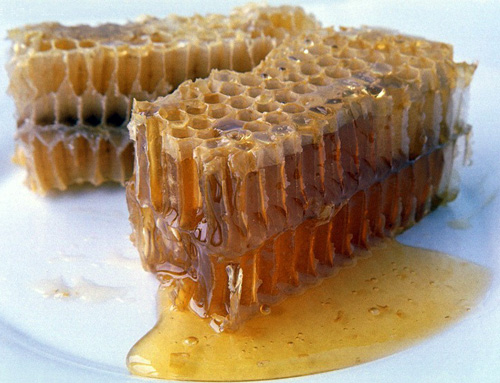It refers to the honey made by bees (Apis cerma Fabricius and A. mellifera L., family Apidae). It is available all over China, collected from spring to autumn.
Medicinal Properties: Sweet in flavor, mild in nature, and attributive to the lung, spleen and large intestine meridians.
Actions: Nourish the stomach and spleen, alleviate pain and moisten the intestine.

Application
1. For epigastric abdominal pain due to deficiency of the spleen and stomach, it is usually used together with Shaoyao ( Radix Paeoniae Alba ) , Gancao ( Radix Glycyrrhizae), etc., which can play a synergistic role. In TCM, many pills and soft extracts are shaped with the help of honey and some medicinal herbs are processed by being roasted with honey, which are all related to its actions of nourishing and moderating nature of other herbs.
2. It is applied for dry cough due to deficiency of the lung and constipation due to dry intestine. For dryness of the lung with cough and hemoptysis, it is usually used with Renshen ( Radix Ginseng ), Shengdihuang ( Radix Rehmanniae ), etc., such as Qiongyu Gao (Soft extract) ; for constipation due to dry intestine, a drink with 30- 60 g is suggested everyday, or used with Danggui (Radix Angelicae Sinensis ), Humaren ( Semen Sesami), Heshouwu (Radix Polygoni Multiflori), etc..
Besides, it is also recommendable for detoxifying medicinal herbs such as Wutou (Radix Aconiti), or applying externally on ruptured but unhealed pyocutaneous disease, or burns from water and fire, etc..
Usage and Dosage:
15 -30 g is used in decoction or drinking. A proper amount is used to help make pills, extracts or suppository.
Notes:
Be cautious in the case with fullness in the epigastric abdomen due to stagnation of dampness, stagnation of phlegm due to damp-heat, loose stool, or diarrhea.








